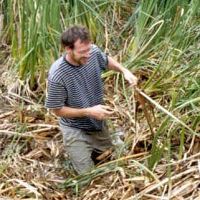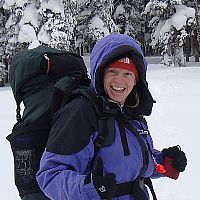Biederman et al., 2015
Ecosystem carbon balance in a drier future: land-atmosphere exchanges of CO2, water and energy across semiarid southwestern North America.
Biederman, J., Scott, R., Goulden, M., Litvak, M., Kolb, T., Yépez, E., Oechel, W., Meyers, T., Papuga, S., Ponce-Campos,G., Krofcheck, D., Maurer, G., Dore, S., Garatuza, J., Bell, T., Krishnan, P. (2015)
B13F. Terrestrial Biome Fluxes and Biogeochemical Impacts of Forest Disturbances: Measurements and Modeling from Minutes to Millennia III Posters, presented at 2015 Fall Meeting, AGU, San Francisco, CA, 14-18 Dec.
-
Sierra, INVESTIGATOR
-
Catalina-Jemez, INVESTIGATOR
Abstract
The southwest US and northwest Mexico are predicted to become warmer and drier, increasing disturbance, shifting ecosystem composition, and altering global CO2 cycling. However, direct measurements of ecosystem land-atmosphere carbon and water exchange in this region have lagged behind those in wetter regions. In this presentation we present a synthesis of CO2, water, and energy exchanges made at 25 Southwest eddy covariance sites (3-10 years each, n = 174 years). This regional gradient includes desert shrublands, grasslands, savannas, and forests and spans ranges of 200 – 800 mm in mean annual precipitation and 2 – 24 ⁰C mean annual temperature, a climate space that has been underrepresented in flux databases and publications. We compare measured fluxes against state-of-the-art remote sensing and modeling products representing current best regional estimates. We find that 65% of annual net ecosystem production of CO2 (NEP) is explained by water availability. Meanwhile, most of the unexplained NEP variability is related to site-specific differences persisting over the observation years, suggesting slow-changing controls such as demography (plant type, age, structure) and legacies of disturbance. Disturbances that kill plants without removing biomass, such as drought, tend to decrease productivity and increase respiration, shifting sites from carbon sinks to sources. However, following disturbances that removed biomass, such as fire, both productivity and respiration decline, with minimal impacts on NEP. Remote sensing and modeling match mean CO2 uptake measurements across spatial gradients in climate and plant functional type. However, measured uptake reveals 200-400% greater interannual variability than model estimates. High variability and sensitivity to water help us understand why semiarid ecosystems dominate the interannual variability of the terrestrial carbon sink in global accounting studies.
Citation
Biederman, J., Scott, R., Goulden, M., Litvak, M., Kolb, T., Yépez, E., Oechel, W., Meyers, T., Papuga, S., Ponce-Campos,G., Krofcheck, D., Maurer, G., Dore, S., Garatuza, J., Bell, T., Krishnan, P. (2015): Ecosystem carbon balance in a drier future: land-atmosphere exchanges of CO2, water and energy across semiarid southwestern North America. B13F. Terrestrial Biome Fluxes and Biogeochemical Impacts of Forest Disturbances: Measurements and Modeling from Minutes to Millennia III Posters, presented at 2015 Fall Meeting, AGU, San Francisco, CA, 14-18 Dec..
Explore Further


